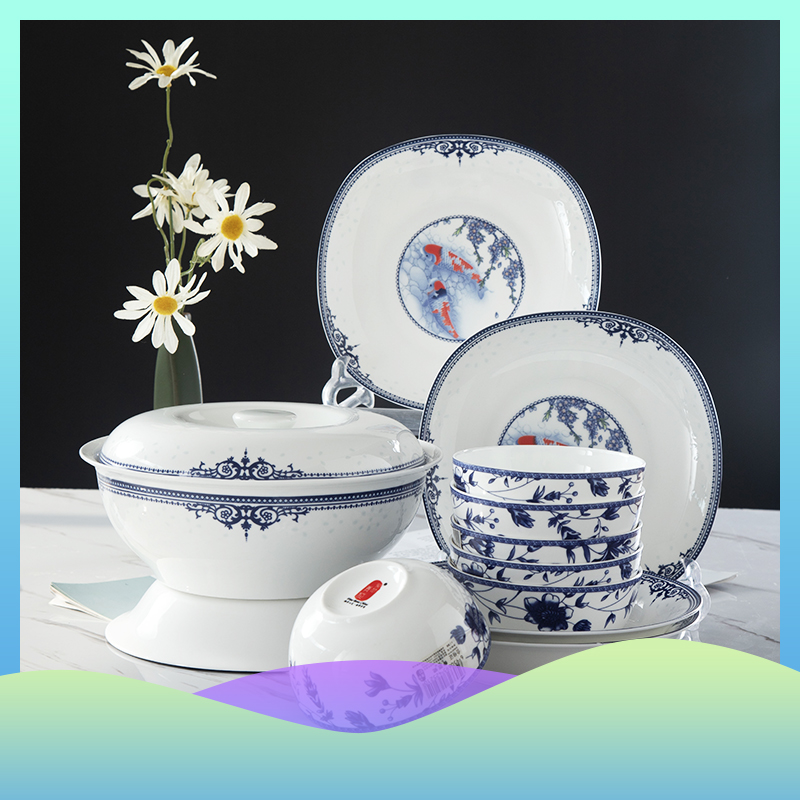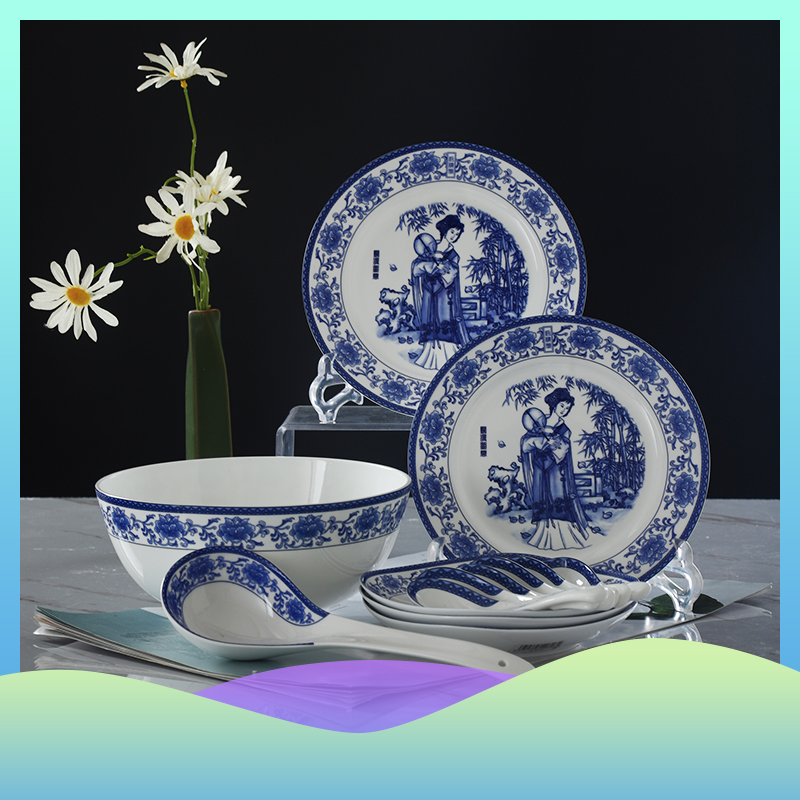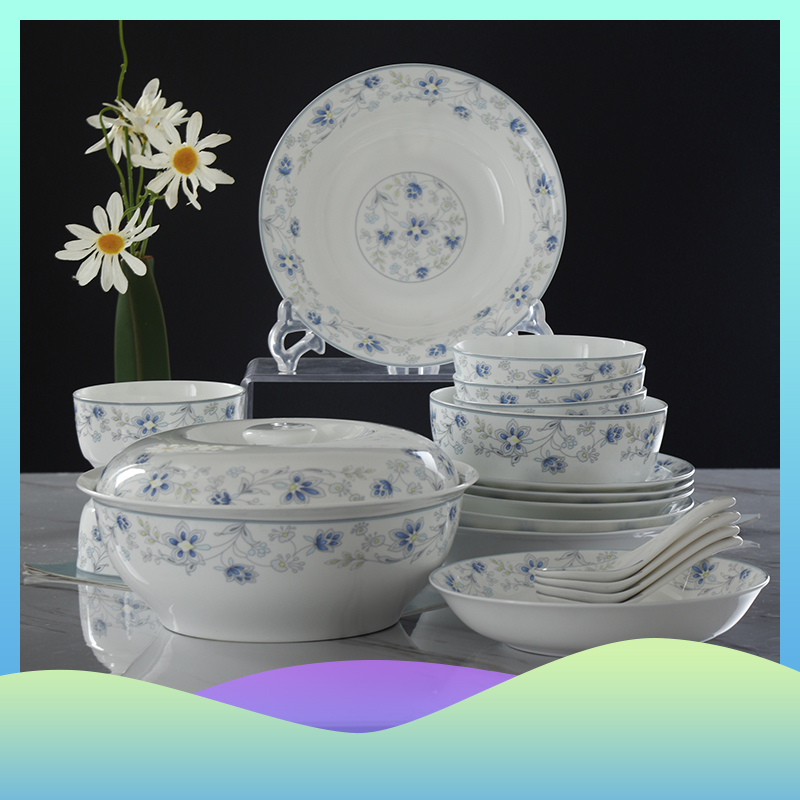Production and glaze coloring of Bone China
How is bone china produced? What is the difference between underglaze color, in glaze color and overglaze color in bone china glaze process? How are the patterns printed on Bone China? What kind of process can we see the exquisite decoration of bone china gift custom pattern? If all of them are detailed, I'm afraid it's hard to make it clear in a few words. If you are interested in bone china products, it's good to have a simple understanding here. The production process of Bone China needs to go through the following steps.
Mud refining: the raw materials of porcelain body kaolin and porcelain stone are ground, removed and kneaded, and then mixed into porcelain clay for making porcelain.
Blank making: usually people feel that porcelain is hand drawn, but many porcelain are actually made by mould. The history of mould making is surprisingly long, and it was found in the earliest time of porcelain making. After the porcelain is shaped, cool the body to half dry. Some of them need to be placed on the wheel again, and the surface of the porcelain can be peeled with a knife to ensure that the surface of the porcelain is smooth. Finally, according to the needs, use different materials (iron, bone, wood and other materials) of the carving knife to carve patterns on the surface.
At this time, the porcelain was actually ready to be fired. The surface of the fired porcelain was frosted and matted, which was generally called plain porcelain / anti porcelain / raw porcelain. It refers to the unsmooth body products (white porcelain without color decoration, also known as plain porcelain relative to color porcelain). Porcelain clay itself can be colored, so plain porcelain can also be of various colors. Wedgwood's famous jade relief series should be regarded as plain porcelain.
Glazing: according to the geometric shape of porcelain, there are different glazing methods. This is the topic of today. In order to understand and identify more conveniently in the collection of porcelain, we must start from the glaze of all kinds of porcelain.
Glaze is a thin layer of glass covering the surface of ceramics and enamels, which is usually composed of silicate complex. Ceramic glaze can be divided into two kinds, pigment and glaze, or the combination of the two. Pigment is the material that produces color, which is usually called colorant. It is inorganic coloring material prepared by high temperature calcination with colorants and other raw materials. The color agent can be used to prepare ceramic pigment, that is, the colored inorganic ceramic decorative pigment can be prepared by mixing the color agent and solvent, or the color agent can be mixed into the basic glaze to prepare various color glaze.
According to the firing temperature, color agents can be divided into high, medium and low temperature types; according to the scope of use, they can be divided into overglaze color, underglaze color and underglaze color. It can also be classified according to coloring mechanism and mineral types.
The underglaze color is directly painted on the porcelain body, and then on the surface of a layer of glaze, or directly on a layer of colored glaze. (it involves the production of glaze and so on. It's quite complicated, but I still don't understand it.) Porcelain itself needs to be sintered between 1280 ° C and 1400 ° C, so the glaze and pigment of underglaze color can withstand high temperature, or must be subjected to high temperature, so as to show the original color. In most cases, the pigment of underglaze color is water-based, once stained with porcelain body, it can not be wiped off. However, the firing of high-temperature glaze is more unstable, which forms the so-called "kiln change", and the aesthetic feeling brought by its contingency has been highly praised.
Blue and white porcelain is a typical underglaze color. It is a kind of porcelain made by spraying or painting on the ceramic body first and then spraying a layer of transparent blue glaze under high temperature. The pigment of blue and white porcelain looks like mud when it is not fired. The beautiful blue will appear after firing at high temperature.
In glaze color, also known as high-temperature fast firing, is to continue to apply pigment on the porcelain which has been glazed and fired, and then melt the original glaze and fuse with the pigment through high-temperature firing. The firing temperature of in glaze color is higher than that of overglaze color, but the firing time is shorter than that of underglaze color. It is a technology emerged in the 1970s, which has higher stability and safety than overglaze color, and has more abundant colors of overglaze color.
Overglaze color usually has some difference between pigment and glaze in refraction, which can be distinguished by luster. And the pigment itself will be slightly convex, there is also a difference in hand feeling.
The problem of glaze is that it contains lead and cadmium, both of which can cause harm to human body. Therefore, in daily use of tableware, we should choose underglaze color and in glaze color, but now there are lead-free glaze. There is also a new type of antibacterial glaze, which can improve the performance of porcelain by adding inorganic antibacterial agent into the glaze.
In the collection of porcelain, we should mention the decoration of porcelain. Here we mainly talk about foreign porcelain. Porcelain is usually decorated with overglaze color, mainly by hand-painted and decal transfer printing.
Decal transfer technology has appeared in the 17th century. Previously, metal transfer printing was used, which should be a kind of gravure printing. The patterns were engraved on metal rollers, transferred to paper, and then printed on porcelain. The limitation of this method is that it will be difficult to make it in the case of polychromatic, usually monochromatic complex patterns.
Later, decals were used, belonging to a kind of orifice printing, called screen printing. Generally, the pattern was divided into blocks according to the color, and then the hollowed out plates were carved respectively. Cover the hollowed out board on the paper, and pour the pigment on the hollowed out board. The pigment will dye the paper at the hollowed out place, and the excess pigment will be picked up by the screen on the hollowed out board. Then the color is transferred to porcelain by paper. Usually need to wait for a color to dry out before the next color transfer. However, the register is much more convenient than metal transfer printing.
In hand drawing, the basic way is the same, because it is difficult to dye the pigment of plain porcelain itself




